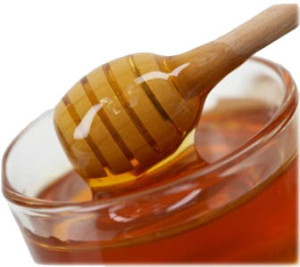Tragic stories around infant botulism have popped up over the past couple of years and, as a dad, reading them is like a gut-punch.
In 2011, infant Amanda Zakrzewski was diagnosed with infant botulism and had to undergo 9 days of antitoxin treatment in hospital. Amanda wouldn’t eat, her eyes glassed over and she wasn’t able to suckle due to the paralysis the botulinum outgrowth caused. The result was months of rehab.
Also in 2011, 16-week-old Logan Douglas was temporarily blinded and paralyzed from infant botulism. He fully recovered after six months, but at one point the illness was so severe that doctors had discussed turning off life support systems as the toxin was attacking his body.
Related to infant botulism, ABC Research Laboratories blog has an interview with Chief Scientific Officer Gillian Dagan about food safety choices she makes as a food scientist. While I agree with most of what she says, she loses me at honey:
We all have fond memories of our grandparents when we were younger. Dr. Dagan remembers when her grandfather kept bees. She was fascinated by the bee hives and loved it when he would lift one of the trays and break off a piece of fresh honeycomb for her to enjoy on the spot. Now she knows better. As much as she loved that as a kid, she probably wouldn’t do that for her daughter. When she was younger she didn’t know that raw honey is a food at risk for botulism and should be pasteurized much like milk. Pasteurized honey is safe honey.
Sort of.
Clostridium botulinum spores, the stuff I’m guessing she’s worried about are tough to address in honey because they are heat-stable. Once the spores get into the digestive system of an infant, which hasn’t fully developed and has a gastric pH higher than 4.6, they can germinate and outgrow. The result is a cell that multiplies and secretes a toxin as a byproduct. The rub, for the honey industry is that consumption is a factor in almost all infant botulism cases. There is also some evidence that infant botulism may be a risk factor for SIDS.
And pasteurized vs. unpasteurized honey is no different when it comes to Clostridium botulinum spores.
According to the National Honey Board, recommended pasteurization treatments include flash pasteurization (170 °F for a few seconds) or heating at 145°F for 30 minutes.
Neither will do much to inactivate the spores. There’s really nice risk profile that the former NZ Food Safety Authority put together in 2006. The authors explicitly say: “Normal cooking temperatures would destroy vegetative cells, although these would not be expected to be present in honey in the first instance (because of the low water activity -ben). Commercially available honey may be pasteurised but this process is not sufficient to destroy the spores.”
I’m not sure if Dr. Dagan was worried about Salmonella that the industry standard wouldn’t do much for the stressed vegetative cells either (there’s a pretty good literature around low water activity and heat resistance , especially with a dry heat).
Honey is pasteurized for other reasons, but it really doesn’t do anything to reduce the risk of infant botulism. That’s why the industry and health authorities suggest that infants not be fed any honey, pasteurized or not, until after their first birthday.


.jpg) Logan is doing great (right, photo from The Sun).
Logan is doing great (right, photo from The Sun)..jpg) health associations recommend that certain foods not be fed to infants under one year of age, including honey. After 12 months of age, honey may be introduced to a child’s diet. Botulinum spores occur in nature, but honey is one of the potential dietary sources for infant botulism.
health associations recommend that certain foods not be fed to infants under one year of age, including honey. After 12 months of age, honey may be introduced to a child’s diet. Botulinum spores occur in nature, but honey is one of the potential dietary sources for infant botulism.